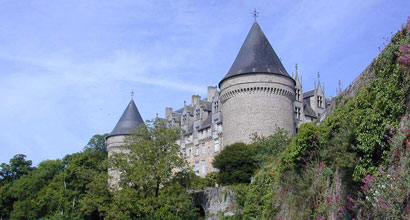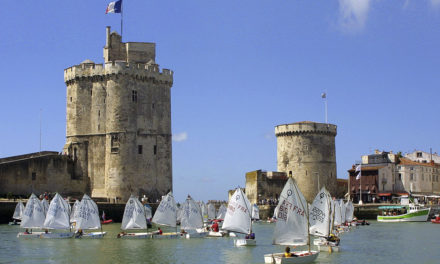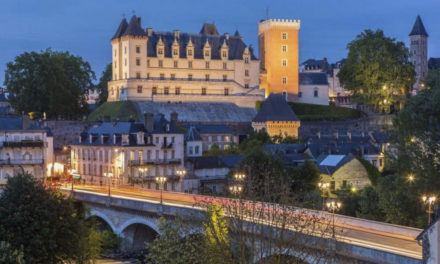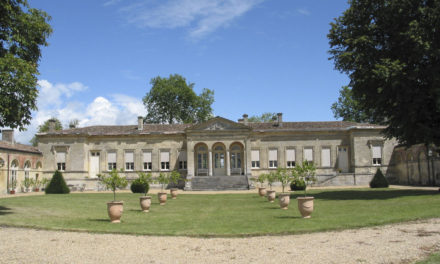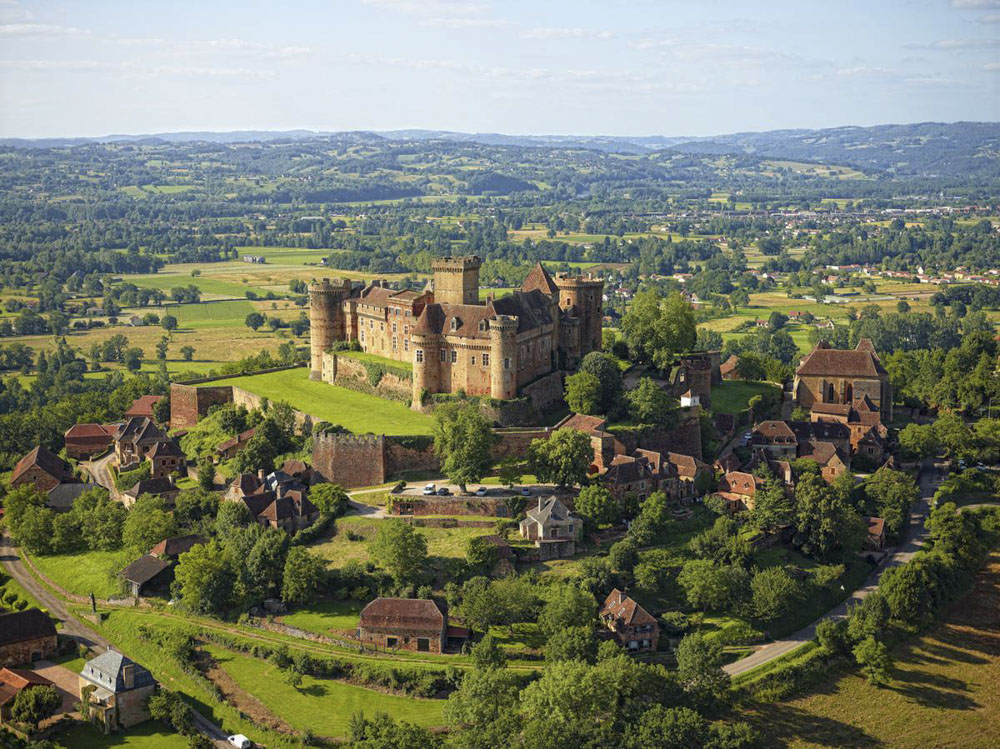
Chateau de Castelnau Bretenoux in The Lot – Copyright Lot tourisme-crt -midi-pyrenees.
The New Aquitaine Region now encorporates the previous Regions of Aquitaine, Poitou Charentes and the Limousin.
The region of New Aquitaine comprises twelve departments and stretches from the Gironde Estuary to the Pyrenees and the Spanish border. The Gironde, besides its first class Bordelais vineyards, tourist attractions, the Entre-Deux-Mers and seaside resorts, is also blessed with the elegant city of Bordeaux with its excellent communications, historic architecture and sophisticated shops and restaurants, as well as the Theatre, Opera and international school.
To the North and East, the Dordogne is popular with tourists for its many châteaux, prehistoric sites, charming bastide towns, vineyards and the varied terrain it offers with its many river valleys and four distinctive areas of the Périgord Vert, Blanc, Noir and Pourpre. Further south, the Lot et Garonne is a prosperous agricultural area, peppered with bastide towns and with good communications from Agen with its airport and TGV.
The Landes is mainly known for its massive man-made forest of pines (over 1 million hectares) planted in the 19th Century in an attempt to stem the march of the dunes inland. Beyond the forest lie various spa towns, the vineyards and farmland leading to the foothills of the Pyrenees and all that they offer, from hiking and climbing to ski resorts and winter sports in general.
270 Kilometres of preserved coastline stretches from the tip of Grave to Bidassoa at the foot of the mountains. Only the Bassin of Arcachon interrupts this line which, between the mouth of the Gironde and that of the Adour, runs in virtually a straight line. The Pyrenees Atlantiques is indented with little ports and creeks, an added bonus being that the coastline has not been over developed. Biarritz, a fashionable resort in the early 19th Century, still retains an element of glamour and remains very popular, whilst St Jean de Luz and the surrounding countryside has gained favour with many escaping the over- populated Côte d’Azur.
There are many family resorts, sandy beaches and wonderful conditions for surfing. The French Basque country and the Béarn are two areas rich in culture and custom but each retaining a very independent character of their own.
Gastronomic delights include Jambon de Bayonne (Bayonne is also known for its chocolates), many duck and goose products, the Pruneaux d’Agen and, paradoxically, the lowest incidence of heart disease in Europe despite the temptations that abound.
The Charentes, Charente Maritimes, of New Aquitaine boast a superb coastline with over 300 miles of sandy beaches. The climate offers a remarkable 2,250 hours of sunshine each year rivalling the Cote d’Azur and providing an extended season for the many activities n offer. The region is rich in buildings of historical and architectural interest, whether relics from the pilgrimages to Santiago de Compostela or from the Hundred Years’ War and earlier conflicts. In the Vienne to the north east, the main City of Poitiers is one of France’s primary centres of Romanesque architecture. It is well served for communications being only 90 minutes from Paris by TGV and with Ryanair flights to London Stansted. The department has a wealth of beauty spots including Chauvigny, Angls sur Anglin and St Savin. At the other end of the spectrum is the ultra modern park of Futuroscope.
The Deux Sevres to the North West of the Region is home to the famous ‘Marais Poitevin’ with its tranquil canals shaded by plentiful poplars. Nearby, the town of Niort has impressive buildings dating from the 12th and 17th centuries and the towns of Parthenay and Thouars also have their share of historical buildings. On the coast at the Bay D’Aiguillon are the many mussel farms for which the region is famous. To the south east lies the Charente, famous for the production of Cognac, Pineau des Charentes, a blend of the Charente grape juice and local cognac, and for its Charentais melons. The River Charente, which flows through the Charente and Charente Maritime from which they take their name, is 360 kms long and navigable from Angoulême. This is a green and pleasant land with an abundance of vineyards and gentle foothills.
To the North East of the Charente round Confolens and near Montmorillon in the Vienne are the breeding grounds of the Poitou-Charentes lamb.
The Charente Maritime which forms the southern coast of this department is particularly well known for the ancient walled sea port of La Rochelle with its old harbour, the oyster beds of the Ile d’Oleron and the tranquil holidaymaker’s paradise of the Ile de Ré . Along the Gironde estuary are numerous resorts including Royan, where sea bathing became ‘de rigeur’ in the 1900’s whilst to the north is Rochefort built as a military base. Numerous forts protect the coastline which boasts miles of sandy beaches, bird sanctuaries and even a zoo. In terms of leisure activities, the region has much to offer. There is horse racing, thalassotherapy, as well as casinos, beach clubs, sailing schools, tennis, riding, cycling, windsurfing, sand yachting and inland, boating in all shapes and forms.
Relatively unknown as a holiday destination, the Haute Vienne, Correze and Creuse are just beginning to enjoy popularity for which it is well qualified. Unspoilt and pleasantly situated away from the hustle and bustle of modern life, the region has wonderful lush countryside criss-crossed by a plethora of rivers and lakes. The famous Limousin cattle and sheep graze on the verdant Plateau de Millevaches. This name derives from the words ‘Melo’ (high place) and ‘Vacua’ (empty or abandoned) rather than the literal translation ‘Plateau of a thousand cows’. Set between 500 and 980 metres high, this plateau is an idyllic place with some wonderful views. There is the Vassivière Lake and the valleys of the Dordogne, Vézère and Vienne. With these high plateaux and rivers full of trout, pike and sander and with chestnut forests carpeted with ceps and other edible fungi, it is a region blessed with many gastronomic delights. Known for its excellent beef and milk-fed veal, it is also known for its charcuterie, saucisson and pâtés which often feature chestnuts. There are also a variety of local cheeses, batter-based cherry clafoutis and apple falugnarde. This terrain also offers opportunities for mountain biking, riding, hiking, watersports of all kinds ranging from waterskiing to windsurfing and sailing, canoeing, fishing and rambling as well as seven golf courses.
The region is also rich in history, châteaux and medieval villages. In all, there are seven of the most beautiful villages of France including Collonges-la-Rouge, Curemonte and Mortemart. When Richard the Lionheart set off on the third crusade with the French King Philippe-Auguste, the overlords strengthened their defences against him and a line of fortified towns and châteaux along the south west border of the Viscounty of Limoges was the result. The route of Richard the Lionheart includes the Châteaux of Châlus, Nexon, Rochechouart, Pompadour and Montbrun. Just before he died after he had been shot at Châlus, Richard ordered Montbrun to be attacked as he had heard it held treasure. There are also fine Romanesque churches along the pilgrims’ route to St Jacques de Compostela.
Limoges is the capital of the region and was founded by Emperor Augustus in 16BC. It boasts Roman remains and villas. In the 12th and 13th centuries, champleve enamels were produced in quantity in Limoges workshops. In the 18th century the discovery of kaolin nearby made Limoges famous for its fine white porcelain, still an important industry. A superb collection can be seen in the Musée National Adrien-Dubouché. Now Limoges has a 900 acre business centre and high technology is replacing the position held for so long by the porcelain trade. The sea and mountains are less than 3 hours away and Paris, only 50 minutes with daily flights to Orly and Roissy as well as Lyon and Clermont-Ferrand. The city benefits from the best of urban life including opera, theatre, films, baroque and rap music and many sports facilities within a peaceful environment. The climate is enviably mild with only one degree difference between Toulouse and Limoges in January. In addition, the city is surrounded by wonderful countryside – a giant natural park at the city gates. Copyright: Sarah Francis
Departments in New Aquitaine :-
Gironde (33) – Main Town : Bordeaux
Dordogne (24) – Main Town : Périgueux
Landes (40) – Main Town : Mont-de-Marsan
Pyrenees-Atlantiques (64) – Main Town : Pau
Charente (16) – Main Town : Angouleme
Charente Maritime (17) – Main Town : La Rochelle
Deux Sevres (79)- Main Town : Niort
Vienne (86) – Main Town : Poitiers
Lot et Garonne (47) -Main town : Agen
Haut Vienne (87)- Main Town : Limoges
Creuse (23)- Main Town : Gueret
Correze – Main Town : Tulle



